
Viking Names
Snibston
Snibston, in the West Goscote Hundred of Leicestershire, is a hybrid place-name formed from the Old Norse male personal name Snípr, a byname related to Norwegian snipa ‘a miser, an unsociable person’ and Old English tun ‘farm, settlement’. Snibston became a joint parish with Ravenstone in 1884 when Ravenstone moved from Derbyshire to Leicestershire.
Read More

Viking Talks
Vikings in Your Vocabulary
Language and dialect are indicators of identity. Before the Vikings settled in the East Midlands, the locals spoke their own dialects of Old English that marked them out from the other inhabitants of England. These dialects changed with the adoption of Old Norse words into the language. Dr Richard Dance of the University of Cambridge will explore and explain how Midlands dialects were influenced by the arrival of the Vikings. Dr Richard Dance Wednesday 10 January 2018
Read More
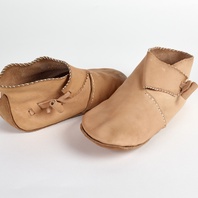
Viking Objects
Reproduction Shoes
A pair of leather turnshoes based on examples found at Coppergate, York. The shoes are vegetable tanned and fastened by a toggle on the side.
Read More
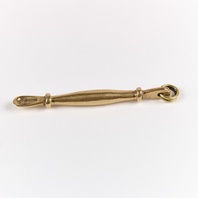
Viking Objects
Reproduction Ear Scoop
An ear scoop (or ear spoon) was a common personal hygiene tool, used for cleaning out the ears. Ear spoons are known from Roman times onwards. They are very common finds on Viking Age sites, suggesting that people took this aspect of personal hygiene very seriously.
Read More
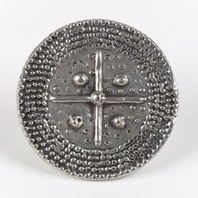
Viking Objects
Reproduction Lead Alloy Brooch
A reproduction of an early medieval, lead alloy brooch found at Barker Gate, Nottingham. Brooches were a typical part of female dress. Scandinavian brooches came in a variety of sizes and shapes which included disc, trefoil, lozenge, equal-armed, and oval shapes. The different brooch types served a variety of functions in Scandinavian female dress with oval brooches typically being used as shoulder clasps for apron-type dresses and the rest being used to secure an outer garment to an inner shift. Anglo-Saxon brooches do not match this diversity of form with large disc brooches being typical of ninth century dress styles with smaller ones becoming more popular in the later ninth and tenth centuries. However, since disc brooches were used by both Anglo-Saxon and Scandinavian women they are distinguished by their morphology. Scandinavian brooches were typically domed with a hollow back while Anglo-Saxon brooches were usually flat. Moreover, Anglo-Saxon brooches were worn singly without accompanying accessories.
Read More
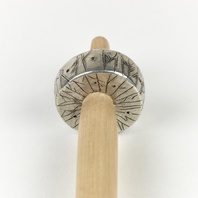
Viking Objects
Reproduction Drop Spindle
A reproduction of a lead alloy spindle whorl with a runic inscription, modelled on a find from Saltfleetby St Clement, Lincolnshire. Fibres were spun into thread using a drop-spindle of which the whorls were made of bone, ceramic, lead, or stone and acted as flywheels during spinning.
Read More
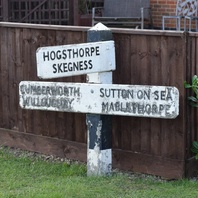
Viking Names
Cumberworth
Cumberworth, in the Calceworth Wapentake of Lincolnshire, probably comes from the Old English male personal name Cumbra and the Old English element worth ‘enclosure’. It has also been suggested that the first element is an Old English ethnonym Cumbre ‘the Cymry, the Welsh, the Cumbrian Britons’. However, the exact implications of such a name are not yet fully understood and are the subject of ongoing work by Dr Jayne Carroll of the Institute for Name-Studies, University of Nottingham.
Read More
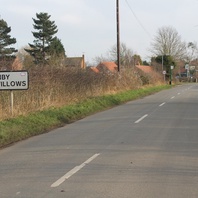
Viking Names
Barnby in the Willows
Barnby in the Willows, in the Newark Wapentake of Nottinghamshire, most likely comes from the Old Norse elements barn ‘child’ and by ‘farm, settlement’. Its meaning, ‘farmstead of the children’, may indicate joint inheritance by the offspring. Alternatively, the first element of the name could come from the Old Danish male personal name Barni. The affix is added at a later date and means ‘among the willow-trees’ and could be connected to its low location by the river Witham. The place-name has the same etymology as Barnby Moor, in the Bassetlaw Wapentake of Nottinghamshire.
Read More
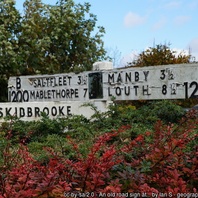
Viking Names
Saltfleetby
Saltfleetby, in the Louth Eske Wapentake of Lincolnshire, comes from the stream-name Saltfleet (Old English salt and flēot) and the Old Norse element by ‘farm, settlement’, referring to the latter’s location. There are actually three Saltfleetbys, now identified by the dedications of their parish churches, Saltfleetby All Saints, Saltfleetby St Clement, and Saltfleetby St Peter.
Read More

Viking Names
Roston
Roston, in the Appletree Hundred of Derbyshire, comes from the Old Norse male personal name Hrosskell and the Old English element tun ‘farm, settlement’. It is thus a hybrid name. Roston is a joint parish with Norbury.
Read More
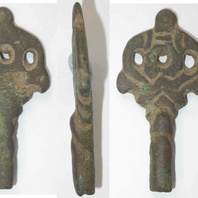
Viking Objects
Decorated Key (DENO-4259B3)
This cast copper-alloy key handle is decorated with Scandinavian-influenced designs reminiscent of the Urnes style of Viking art. Keys were not only practical items but also symbols of status. Women often carried the keys to the family’s chests of valuables. They also are often buried with keys, representing their authority in the household. See also the blog post on keys in the Viking Age.
